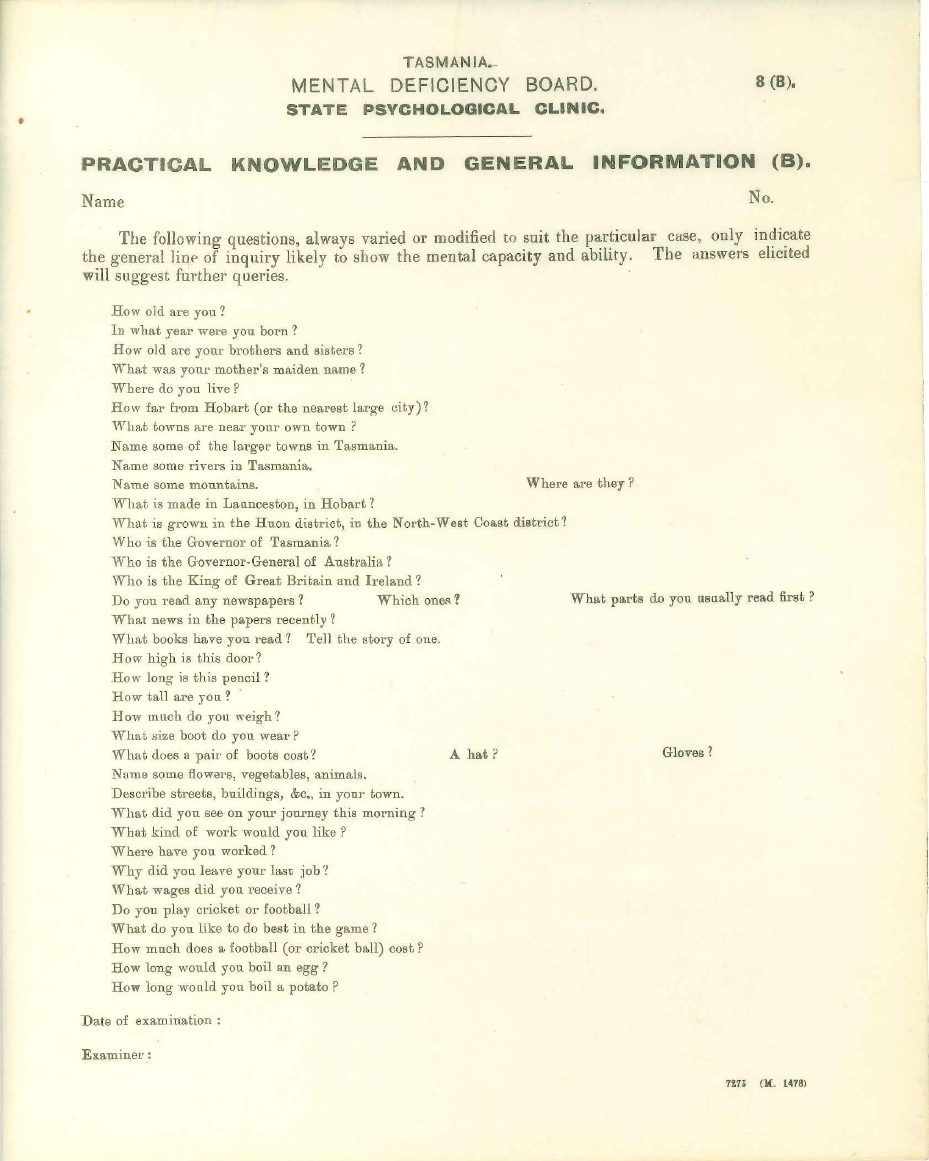Here is a local Tasmanian test for Mental Deficiency from Willow Court, most likely called Mental Diseases Hospital at the time. The test was clearly developed during either the time of King George V or VI, most likely after the new Act in 1920.
Today the evaluation and classification of an intellectual disability is a complex issue. There are three major criteria for intellectual disability: significant limitations in intellectual functioning, significant limitations in adaptive behavior, and onset before the age of 18.
The IQ test is a major tool in measuring intellectual functioning, which is the mental capacity for learning, reasoning, problem solving, and so on. A test score below or around 70—or as high as 75—indicates a limitation in intellectual functioning.
Other tests determine limitations in adaptive behavior, which covers three types of skills:
Conceptual skills—language and literacy; money, time, and number concepts; and self-direction
Social skills—interpersonal skills, social responsibility, self-esteem, gullibility, naïveté (i.e., wariness), social problem solving, and the ability to follow rules, obey laws, and avoid being victimized
Practical skills—activities of daily living (personal care), occupational skills, healthcare, travel/transportation, schedules/routines, safety, use of money, use of the telephone
In defining and assessing intellectual disability it is stresses that, in addition to an assessment of intellectual functioning and adaptive behavior, professionals must consider such factors as:
Community environment typical of the individual’s peers and culture.
Linguistic diversity.
Cultural differences in the way people communicate, move, and behavior.
